This report compiles insights from workforce professionals about the types of questions they ask employers. 210 workforce professionals in Cleveland, Indianapolis, and Philadelphia responded to a survey about the kinds of conversations they have with business representatives on topics related to workplace practices, environment, and equity and inclusion in the workplace.
This article highlights how public procurement can be a strategy to improve job quality.
In this brief, we highlight key ideas for how the workforce development system can promote workplace health and safety during and after the COVID-19 pandemic.
This op-ed discusses the important role of essential workers and how coming out of the pandemic, we can ensure their contributions are fully recognized and valued.
This guide identifies policies employers can enact to support workers during COVID-19, which can be applied in other moments of workplace upheaval. There are sections on providing emergency benefits to workers, ensuring a safe workplace, and how to support workers who are furloughed or laid off. This publication includes tangible solutions that employers can implement, such as exploring a work-sharing agreement or increasing flexibility of scheduling. While designed for employers, this guide may also be useful for worker advocates and workforce professionals who work closely with employers to support workers.
This toolkit is designed to equip organizations and businesses with strategies to support employee mental health during the coronavirus pandemic but is relevant as a resource on supporting employee mental health across settings. The guide can be used as an informational document or as a presentation to leaders and managers, including human resources teams and organizational leaders. Included are recommendations to build a culture of empathy and support, links to external resources, and examples of company practices. Individuals supporting businesses or workers may also find the toolkit useful to share with employers to encourage practices that support employee mental health.
This corporate response tracker aggregates ways the US’ largest businesses responded to the coronavirus crisis, with links to more specific descriptions of the policies implemented. Employers, practitioners and policymakers alike may find this tool useful in looking back at the impact and response to the outbreak of COVID-19 and in identifying policies that can support workers in similar public health emergencies. See Just Capital’s additional resources for examples of businesses centering worker interests in their coronavirus responses.
This set of principles provides guidance for COVID-19 policy responses that center equity and longer-term stability and prosperity–which remains relevant in the context of COVID-19 recovery and as a resource for understanding community needs after societal shocks. Policymakers and practitioners seeking to support workers and job quality may be particularly interested in the sections at the bottom of the page related to investing in community infrastructure and building an equitable economy.
This online training addresses common questions about COVID-19 in food service settings and offers practical steps that chefs, supervisors and workers can take to keep themselves and diners safe during COVID-19 and other health emergencies. The training includes best practices for restaurants as well as a unit on creating personal health plans for workers. This guide can be used by employers as well as worker advocates and others who work closely with employers.
This resource provides guidance related to seven health and safety questions that small businesses have grappled with since the start of the pandemic. For each question, the authors include practical information, examples of steps taken by other small businesses, and links to helpful resources. Topics covered include creating an equitable and inclusive environment, recognizing and responding to workers’ caregiving responsibilities, and communicating about and ensuring workplace safety. Although written for small business owners, this resource may also be useful for larger employers as well as individuals that work with businesses, including economic development, investing and lending, and workforce development professionals.
